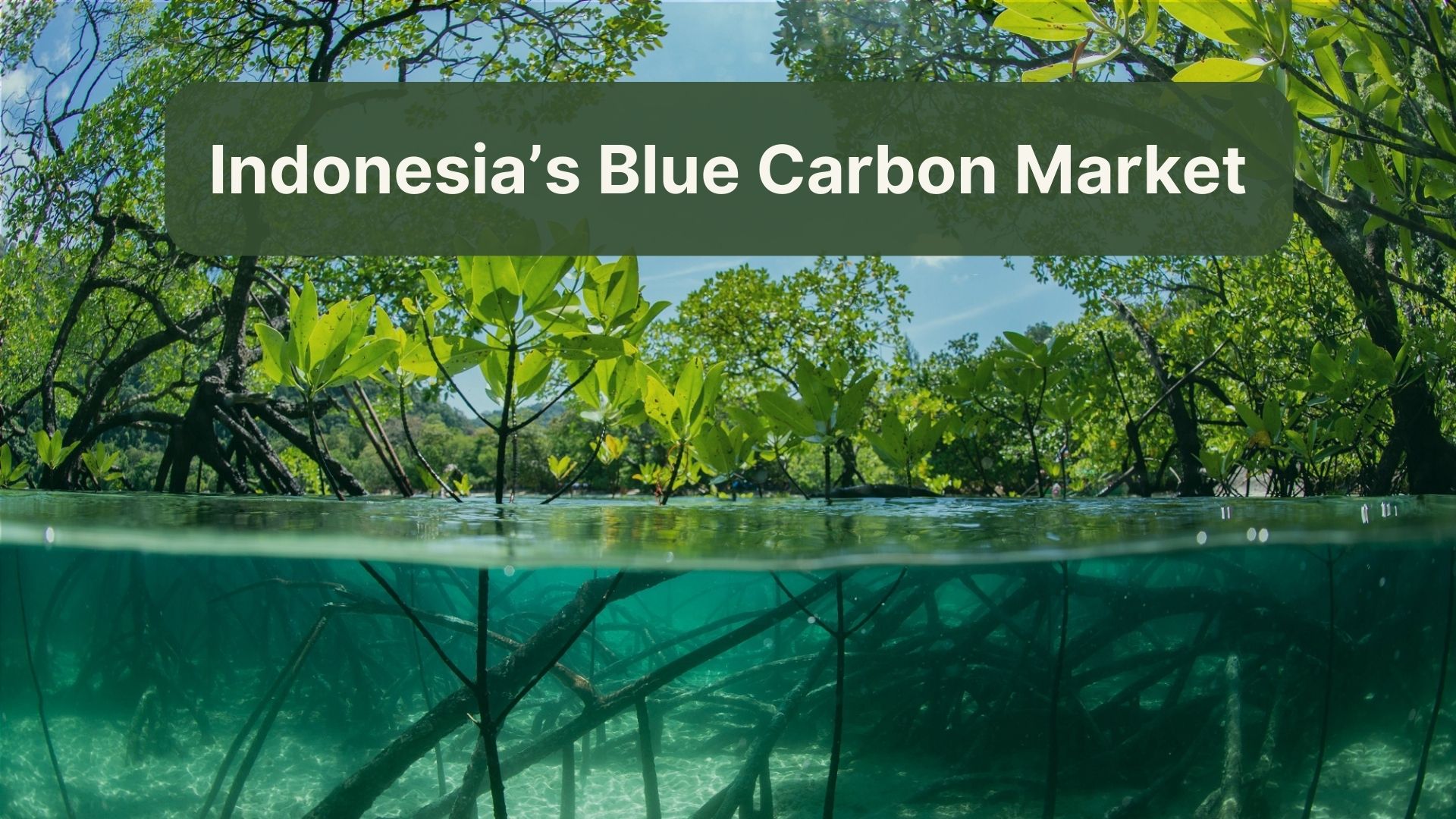Blue Carbon Credits Entering the Carbon Market
News

Blue carbon ecosystems, which include mangrove, seagrasses, and salt marshes, provide great benefits to preserve biodiversity, sequester carbon, and improve community resilience. Blue ecosystems are more efficient in sequestering carbon than terrestrial forests since the carbon is stored underground. For instance, mangrove forests are able to store around 3-4 times more carbon than terrestrial forests [3]. Demand for carbon credits is expected to increase by 15 times globally [2]. Blue ecosystems can supply a significant portion of carbon credits. Indonesia may become one of the countries that benefit the most from blue carbon credits sale, since 17% of the world’s blue ecosystems are present in Indonesia [1].
Indonesia’s Ministry of Marine Affairs and Fisheries has established the Ministerial Regulation Number 1/2025 on Procedure for Implementation of Carbon Economic Value. Currently, they are preparing the information system to facilitate the exchange of blue carbon credits. It is planned that there will be 2 blue carbon exchange mechanisms: carbon trade and results-based payment. Besides the preservation of blue ecosystems, the regulation enables carbon credits to be generated from responsible capture, cultivation, processing, and trade of fishery products. Like any other carbon credits, blue carbon offsets are traded through IDXCarbon in the form of emission reduction certificates (SPE-GRK) [4].
To unlock the potential of blue carbon, not only that proper regulation and system should be established, research on blue ecosystems must be promoted. According to the Oceanography Research Center of the National Research and Innovation Board (BRIN), most research on blue ecosystems is only focusing on biomass. There is a lack of interest in organic sediments, although a huge portion of blue carbon is stored in the sediments. Carbon stock may vary with different ecosystems or based on spatial and temporal scales. We are yet to find out the factors for these variations, the rate of carbon sequestration, how much carbon is emitted, and so on [1].
Curious about carbon offset and its market? Explore Fairatmos’ site to find out more.
References:
[1] Fajar, J. (2024). Perlu Penelitian Lebih Banyak tentang Karbon Biru di Indonesia. [online] Mongabay. Available at: https://www.mongabay.co.id/2024/04/23/perlu-penelitian-lebih-banyak-tentang-karbon-biru-di-indonesia/.
[2] Johnston, W. (2021). What are blue carbon credits and how to maximise their impact. [online] World Economic Forum. Available at: https://www.weforum.org/stories/2021/09/how-to-maximise-blue-carbon-credits/.
[3] Nyanga, C. (2020). The Role of Mangroves Forests in Decarbonizing the Atmosphere. In: M. Bartoli, M. Frediani and L. Rosi, eds., Carbon-Based Material for Environmental Protection and Remediation. [online] IntechOpen. Available at: https://www.intechopen.com/chapters/71927.
[4] Petriella, Y. (2025). Ekosistem Laut Padang Lamun Siap Masuk Perdagangan Karbon. [online] Bisnis.com. Available at: https://hijau.bisnis.com/read/20250211/653/1838434/ekosistem-laut-padang-lamun-siap-masuk-perdagangan-karbon.

